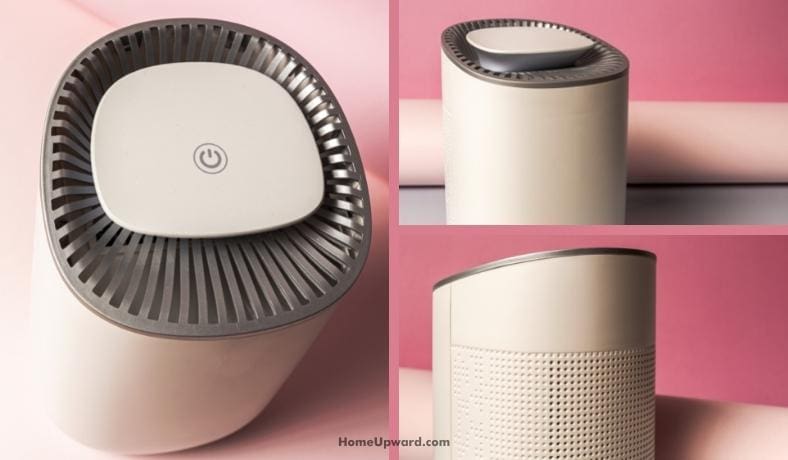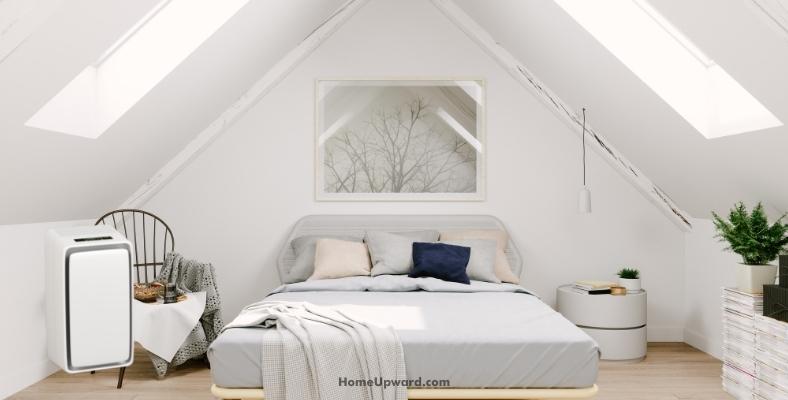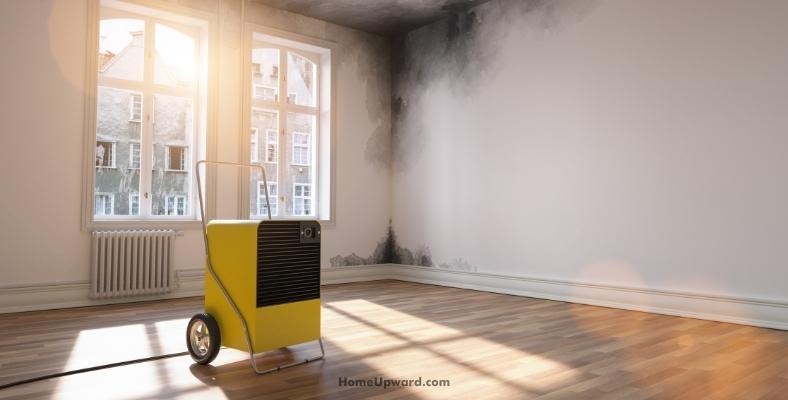Contents
Should I Put a Dehumidifier in My Attic?
For attics with excessive moisture and high humidity problems, a dehumidifier can be helpful but isn’t really a permanent solution. A dehumidifier will indeed help keep moisture under control but:
- Your energy costs will go up monthly when it’s in use.
- You’ll have to drain the water collection tank periodically or provide an outside drain access so it will be self-draining.
Ultimately the best option is to use a dehumidifier until you can address the problem at its source by doing the following:
- Fixing all leaks that allow moisture to come inside.
- Making sure there’s better ventilation to allow moisture to escape.
- Limiting the amount of warm air that can reach or stay in the attic by sealing pipes, chimneys, lighting fixtures, and attic stair entryways for example.
If you still have problems following this you can continue to run your dehumidifier as needed.
Whole-house dehumidifiers
If moisture and humidity are a bigger problem you can install a whole house dehumidifier.
How Do I Control the Humidity in My Attic?
Excess humidity levels in the attic, especially mold growth, can make a home prone to several health problems.
1. Fix the leaks
The first step to preventing a moisture problem in the attic space is to find any leaks causing high humidity levels. From replacing damaged shingles to cleaning the gutters, an inspection by a roofing contractor can help identify the issue and perform the necessary leak repairs.
You can also your look on your own. Leaky roofs are a common source to begin with.
2. Use Good Ventilation
Attics are confined spaces which means they’ll trap moisture inside if there isn’t good ventilation to allow it to escape and for the inside air to dry.
Roof turbines offer a way for air to not only escape but also move, allowing air to circulate a bit. Fixed roof vents allow indoor warm or moist air to vent to the outside as well.
Can a Dehumidifier Stop Mold?
A dehumidifier can prevent the first growth of mold but will not kill existing areas where it has begun. You’ll still need to kill existing mold growth yourself.
Getting rid of mold entirely isn’t always easy. Even if a house has a balanced and healthy humidity level, mold spores remain airborne or settle on surfaces.
However, mold only grows when there’s excess moisture in a given space meaning you’ve got to be vigilant about keeping the relative humidity levels indoors below 60% or so.
Where Should You Place a Dehumidifier in the Attic?
The best place to place a dehumidifier in the attic is close to the spot where there’s a moisture problem. If there are any water leaks in the attic that need attention, put the dehumidifier nearby until the problem is taken care of.
How Do You Prevent Mold in Your Attic?
The best way to prevent mold in the attic is to provide good ventilation and stop any leaks which allow moisture in.
Since attics are sealed spaces with limited ventilation, they tend to be prone to excessive moisture buildup and mold or mildew problems. It’s a good idea to inspect your attic several times a year to check for any blocked vents or windows that may be limiting the ventilation in the attic.
Roof leaks are common causes of mold growth in the attic as they often go unnoticed by homeowners which means you’ll want to check for water coming in especially after heavy rains or melted snow.
Should a Dehumidifier Be Used in a Vented or Unvented Attic?
A dehumidifier is typically recommended to use in an unvented attic due to no ventilation but can be used in either one. In high humidity climates an unvented attic is fine for dehumidifier use as less should be able to get into the attic.
In vented attics if there’s a moisture problem a dehumidifier can be used regardless. Vented attics should require the machine to run less to bring down the relative humidity level.
How Can You Improve Your Attic Ventilation?
5 tips for better attic ventilation
1. Review how much of a change (if any) you need
It’s important to find out if – and how much – additional ventilation your attic actually needs before you make any changes or spend any time, effort, or money. Depending on the season, here’s an easy test to see how well your attic is ventilated:
- Summertime: Place a hand on your ceiling on a hot day. If it seems warm, your attic is likely retaining hot air. This makes it harder for your house to be cool and comfortable and indicates that additional ventilation is required.
- Wintertime: If you see ice buildup on your eaves in the winter, your attic isn’t well-ventilated. The ice forms due to warm air from the indoors getting stuck inside the attic, causing rooftop snow to melt and refreeze along the eaves. If warm air is being trapped inside your attic, you can also check it from the inside. You’ll see condensation (or frost, if it’s really cold) on the attic’s ceiling because this air is damp.
An attic with sufficient ventilation will have equal levels of incoming and outgoing air. Ventilation should be placed in a way that allows air to enter from along the eaves and exit through the roof’s peak.
2. Install Roof Vents
Typically, roof vents are placed where the attic’s air naturally rises, at the pinnacle of the roof. You may avoid heat accumulation and condensation by installing roof vents in your attic to ensure warm, moist air can escape.
Your roof vents need to be occasionally checked to make sure they are debris-free and unblocked.
3. Add Soffit Vents
Boards known as soffit attach your roof overhang’s underside to your house’s outside walls. They hide the roof beams, but when correctly ventilated, can be very helpful for attic ventilation.
Vents in the soffit allow outside air to enter the attic from below. They establish a seamless system that permits air to enter, rise, and leave the attic when used in conjunction with roof vents.
There are two types of soffit vents: rectangular and continuous.
- With rectangular vents, openings are usually cut out of the wood beams of your home and a vent is then placed in that opening.
- Continuous venting means that you have vented soffit all the way around the attic area.
Like roof vents, soffit vents also need to be checked occasionally and maintained to keep them clear.
4. Install Gable Vents
Roof and soffit vents by themselves might not be enough. The increased airflow required can be created by installing gable vents. These have adjustable openings aimed to force air out of the attic and are situated at the gable ends of the roof.
Some houses or buildings only have gable vents which aren’t enough in many cases. You’ll probably need to add more ventilation if your house only has gable vents and no others such as soffit vents or roof vents.
5. Adds Fans to Improve Airflow
Setting up an attic fan can also enhance airflow and create supplementary ventilation. The majority of attic ventilation techniques rely on hot air rising naturally.
If you live in a particularly hot or humid area, however, this passive ventilation might not be adequate. Fans can provide good additional air movement in this case.
They can be powered by either a regular electric power source or solar panels. Some can be turned on manually with a switch while others can be regulated by a thermostat that turns on the fan automatically when the temperature inside reaches too high of a point.






